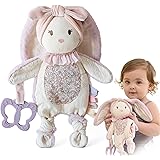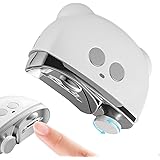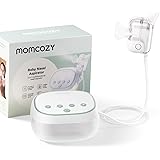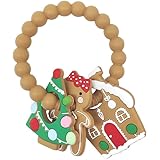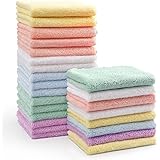Are you feeling overwhelmed by the thought of giving your little one an easy head bath? It is a common concern for many new parents, as the process can sometimes seem daunting. The video above demonstrates a straightforward approach, and this accompanying guide will provide an even deeper understanding of how this essential task can be handled with confidence and ease. Achieving a calm and effective head bath for your baby is certainly possible with the right techniques and preparation.
Understanding the Importance of a Gentle Baby Head Bath
Bathing a baby’s head is not merely about cleanliness; it is an opportunity for gentle stimulation and bonding. Regular cleansing helps maintain scalp hygiene and prevents common issues like cradle cap, which often develops when sebum and dead skin cells accumulate. A clean scalp is also known to promote healthy hair growth and keep your baby comfortable. This routine becomes a significant part of their overall well-being and daily care.
Imagine if your baby could communicate their comfort during bath time. They would likely appreciate a gentle touch and a soothing environment. The experience of a head bath should be pleasant for the baby, not a source of distress. This careful approach is fundamental to creating positive associations with hygiene routines from an early age. The focus is always on making it a comforting experience.
Essential Preparation for a Smooth Baby Head Bath
Thorough preparation is crucial for a stress-free baby head bath. All necessary items should be gathered and placed within easy reach before the bathing process begins. This includes a soft washcloth, a gentle baby shampoo, a small cup or pitcher for rinsing, and a hooded towel for wrapping your baby afterward. Having everything organized prevents you from having to reach or leave your baby unattended even for a moment.
The water temperature must be carefully checked, ideally with a bath thermometer, to ensure it is between 98 to 100 degrees Fahrenheit (37-38 degrees Celsius). Your elbow or wrist can also be used to test the water’s warmth, which should feel pleasantly warm, not hot. A non-slip bath mat or a dedicated baby bath support system should be used to ensure the baby’s safety. This meticulous setup greatly contributes to a tranquil bathing environment.
Setting the Scene: Creating a Calm Environment
A calm and quiet environment can significantly influence your baby’s disposition during bath time. Soft lighting and a warm room temperature are often appreciated by infants. Distractions should be minimized, allowing both you and your baby to focus on the soothing experience. Gentle background music or soft singing can also be introduced to make the setting more inviting. This thoughtful atmosphere is known to foster relaxation and enjoyment.
Step-by-Step Guide to Bathing Your Baby’s Head
The actual process of bathing your baby’s head involves several careful steps designed for safety and efficacy. Holding your baby correctly is paramount; their head should be supported at all times, either with your arm or by a bath support. This secure hold prevents slips and allows for controlled movements during the bath. A proper grip is considered the foundation of a successful head bath.
Applying Shampoo and Gentle Cleansing
A small amount of tear-free baby shampoo can be applied to your hand, then gently massaged onto your baby’s wet scalp. Circular motions are typically used, covering the entire head without applying excessive pressure. Special attention should be given to any areas where cradle cap might be present, as a very soft brush or comb can be used to loosen flakes. The baby’s delicate skin must always be treated with the utmost care.
Imagine the gentle touch of a soft cloud upon your baby’s head as you meticulously cleanse their scalp. The shampoo’s lather should be minimal, making it easier to rinse and reducing the chances of irritation. This controlled application helps to ensure that no soap accidentally enters your baby’s eyes. Maintaining a calm demeanor throughout this process is observed to transfer a sense of security to your infant.
Rinsing Techniques for Protecting Eyes and Ears
Rinsing the shampoo from your baby’s head must be done with precision to protect their sensitive eyes and ears. One common method involves cradling your baby in one arm, tilting their head slightly backward. A small cup or pitcher can then be used to gently pour water over their head, starting from the hairline and working backward. A clean, damp washcloth can also be used to wipe away any excess shampoo. This careful approach prevents water from entering their ears or running into their eyes.
Alternatively, the football hold can be employed where the baby’s body is tucked under your arm, with their head positioned over the tub. This position allows for a direct rinse while keeping their face clear of water. Regardless of the method chosen, speed and gentleness are key. The rinsing phase is often completed quickly to minimize any potential discomfort for the baby. This precise management of water flow is considered essential.
Addressing Common Challenges During a Baby Head Bath
Parents often encounter various challenges when giving their baby a head bath, but solutions exist for most of these concerns. One frequent issue is a baby crying or fussing during the bath. This can sometimes be alleviated by ensuring the room is warm, the water temperature is perfect, and you are speaking to them in a soothing voice. Distraction with bath toys or a gentle song can also be effective.
Imagine if your baby’s cries could be instantly calmed by your reassuring presence. Slippery babies are another common concern, which is why a secure grip and a non-slip surface are non-negotiable. For babies with cradle cap, applying baby oil or petroleum jelly to the affected areas a few hours before the bath can help soften the flakes, making them easier to remove with a soft brush during cleansing. Persistence and patience are considered valuable virtues here.
Post-Bath Care and Continued Hygiene
Once the head bath is complete, prompt and gentle post-bath care is essential for your baby’s comfort and health. Your baby should be immediately wrapped in a soft, hooded towel to retain warmth and prevent chills. Their head and hair should be carefully patted dry, not rubbed vigorously, to avoid irritation to their delicate scalp. Ensuring complete dryness prevents any lingering dampness that could lead to discomfort or skin issues.
A mild, hypoallergenic baby lotion or moisturizer can be applied to their scalp and body after drying, especially if their skin tends to be dry. This helps to lock in moisture and keep their skin soft and supple. Brushing your baby’s hair with a soft baby brush is also a good practice, as it can help distribute natural oils and stimulate the scalp. These steps contribute significantly to your baby’s overall skin health and comfort after their easy head bath.


